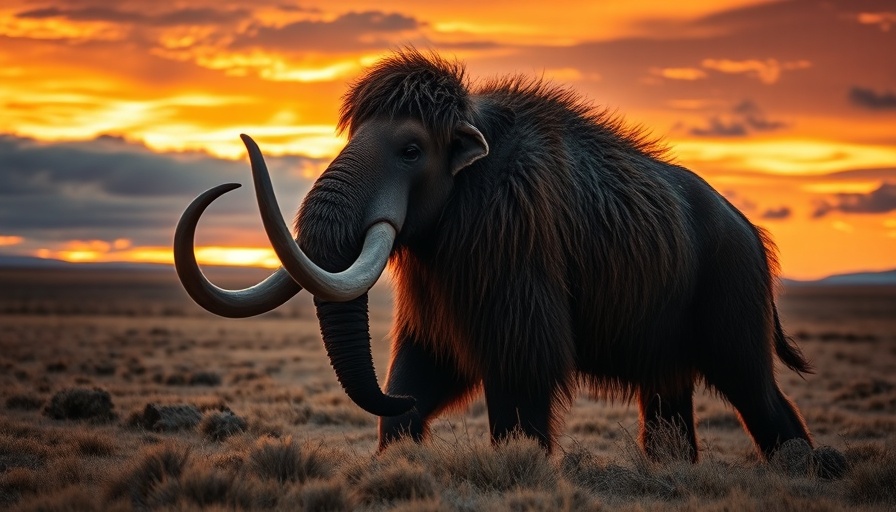
A Glimpse into De-extinction: Breath of New Life for Mammoths
Imagine a world where woolly mammoths once again roam the earth. It sounds like a concept straight out of a science fiction movie, yet advancements in biotechnology are edging us closer to this possibility. Colossal Laboratories and Biosciences are taking daring steps towards this dream, having recently genetically modified mice to showcase some characteristics of their long-extinct relatives.
The Science Behind Mammoth Resurrection
Through intricate genetic engineering, scientists have successfully altered mouse DNA to mimic the traits of woolly mammoths. This proof-of-concept serves as a preliminary test before applying similar techniques to Asian elephants, the mammoths' closest living relatives. While this endeavor sparks excitement regarding the potential de-extinction of creatures thought to be lost forever, even proponents agree that the path to restoring these majestic giants is fraught with challenges.
Challenges in Reintroduction: More Than Just a Genetic Puzzle
The primary issue isn’t merely cloning a mammoth; it’s ensuring their survival in modern ecosystems. The habitats once occupied by woolly mammoths have changed dramatically, influenced heavily by climate change. Experts warn that introducing these large, cold-adapted animals into today's warmer environments may lead them toward a second extinction.
What We Stand to Gain from These Efforts
This experiment is not just about resurrecting an extinct species. According to George Church, co-founder of Colossal Biosciences, the work conducted to save the woolly mammoth can also benefit modern elephant populations. For instance, the new stem cells derived from Asian elephants serve dual purposes: facilitating mammoth-like traits while enhancing current crop resilience against diseases, thus protecting these endangered animals.
Scientific Breakthroughs vs. Ethical Dilemmas
However, as exciting as these scientific advancements are, the ethical questions surrounding de-extinction remain alive and contentious. Critics argue that this focus detracts from urgent conservation efforts currently needed for living species. With many species on the brink of extinction today, some experts advocate for prioritizing endangered animals over efforts to resurrect those long gone. They contend that resources should mainly support conservation initiatives that directly impact existing biodiversity.
Looking Ahead: The Future of Biotech and Conservation
As research progresses, it is vital to think critically about the implications of de-extinction. The potential for learning more about genetic engineering and biodiversity is tremendous, leading to insights that could aid current conservation efforts. Although resurrecting woolly mammoths may not be feasible in our lifetime, the technologies birthed from these projects could help sustain living species and ecosystems.
Ultimately, the journey toward breeding a creature as momentous as the woolly mammoth prompts us to consider a future where biotechnology plays a pivotal role in conservation. As we weigh the merits against the ethical considerations, this groundbreaking field offers exciting possibilities—and stirring debates—about humanity's role as stewards of the natural world.
 Add Row
Add Row  Add
Add 




Write A Comment